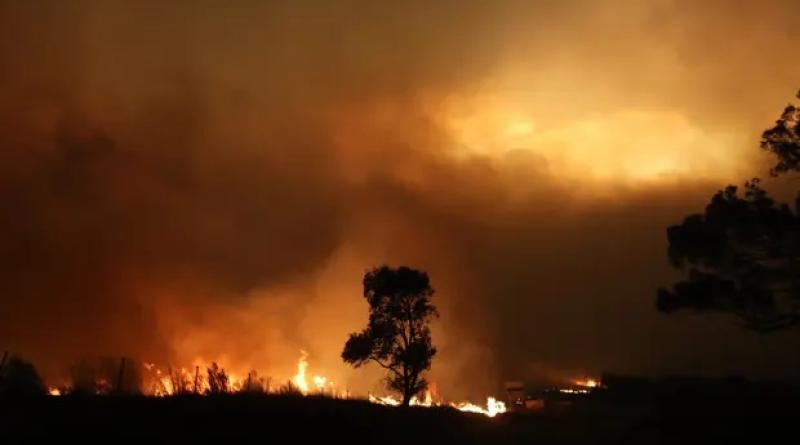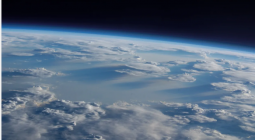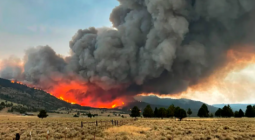Smoke from Black Summer bushfires depleted ozone layer, study finds

More intense bushfires due to climate change will slow recovery of ozone layer, scientist says
Smoke injected high into the atmosphere by the 2019-2020 Australian bushfires resulted in a depletion of the ozone layer, new research has found.
Scientists have found that the smoke from the devastating bushfires caused a 1% loss in ozone – an amount that typically takes one decade to recover.
The study, published in the Proceedings of the National Academy Of Sciences, suggests rising fire intensity and frequency due to the climate crisis may slow the recovery of the ozone layer.
The ozone layer – part of the stratosphere, the second layer of Earth’s atmosphere – absorbs ultraviolet radiation emitted by the sun and consists of a high concentration of ozone molecules.
Using satellite observations, researchers have found that the smoke aerosols reacted with nitrogen in the stratosphere, resulting in chemical shifts causing the depletion of ozone.
Study co-author Dr Kane Stone, of the Massachusetts Institute of Technology, said the reduction occurred between March and August 2020.
“As the bushfire aerosols leave the stratosphere over time – they come back down to the [Earth’s] surface – ozone depletion stops,” Stone said. “This is a short term decrease, but it’s significant.
“We are currently seeing ozone recovery at about a 1% recovery a decade.”
Ozone is continuously replenished in the atmosphere above the tropics. “Sunlight reacts with oxygen and it creates ozone,” Stone said.
Despite the continual production of ozone, concentrations had been depleted by substances such as chlorofluorocarbons, which were phased out under the 1987 Montreal protocol.
Smoke from the 2019–2020 bushfires circumnavigated the globe, blanketing the middle latitudes of the southern hemisphere. The pyrocumulonimbus cloud formed during the event – three times larger than anything previously recorded – ejected smoke particles kilometres upwards into the stratosphere.
The researchers did not study if the bushfire smoke affected the Antarctic ozone hole, which occurs at more southern latitudes and develops annually during the southern hemisphere spring.
The director of the centre for atmospheric chemistry at the University of Wollongong who was not involved in the research, Prof Clare Murphy, said more intense fires in the future – as is predicted by current climate models – would slow down the recovery of the ozone layer.
“In the stratosphere, the pressure is very low … there’s not a lot of molecules around, so chemistry typically happens very slowly,” Murphy said. “You put [smoke] particles up there and suddenly you provide a surface on which the chemistry can happen many orders of magnitude faster.”
Efforts to address the Antarctic ozone hole were a successful example of coordinated environmental action, Murphy said. “There’s no reason that humanity can’t come together and solve the climate issues as well.”
cover photo: The pyrocumulonimbus clouds formed during the Black Summer bushfires sent smoke particles kilometres upwards into the stratosphere. Photograph: Mike Bowers/The Guardian





